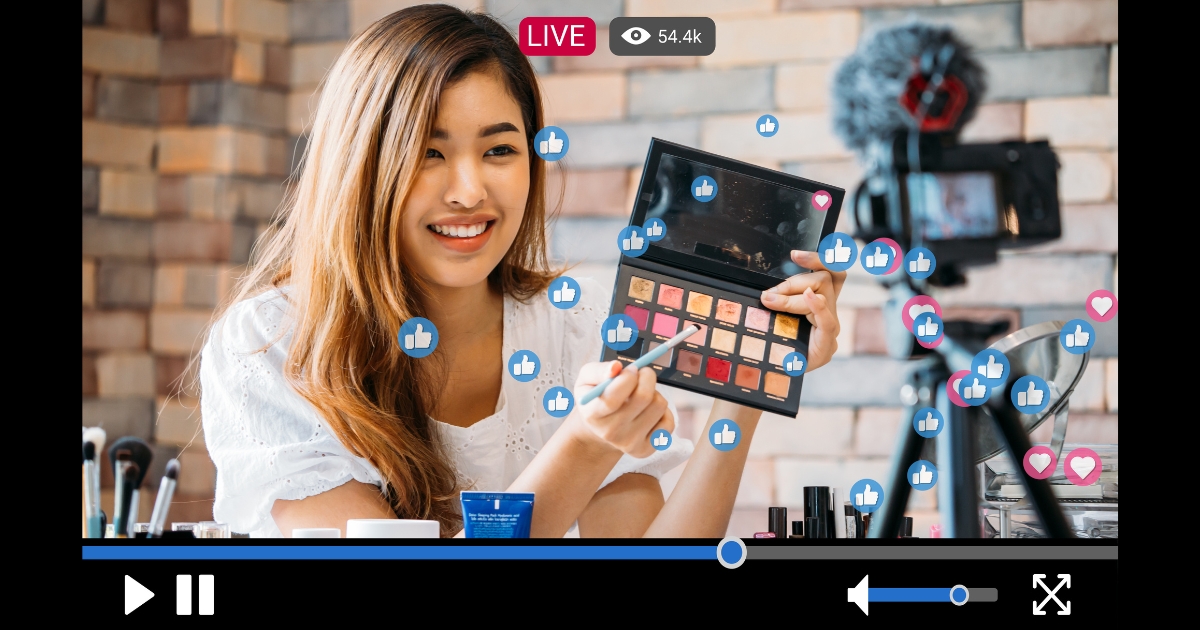In recent years, live streaming has become an increasingly popular feature on social media platforms. From Facebook Live to Instagram Live to TikTok, platforms are constantly innovating and evolving to make live streaming more accessible and engaging for users. But what does the future hold for live streaming on social media? In this blog post, we’ll take a look at the current state of live streaming on various social media platforms and speculate on where the technology might be headed in the future.
First, let’s take a look at some of the most popular social media platforms and how they currently incorporate live streaming into their offerings.
Facebook Live:
Facebook Live was one of the first social media platforms to offer live-streaming capabilities, and it remains a popular choice for businesses and individuals alike. One of the key advantages of Facebook Live is its wide reach, as it is available to anyone with a Facebook account. This makes it easy for businesses to connect with their audience, whether they are targeting a global or a local market.
In addition to its reach, Facebook Live offers a number of features that make it a useful tool for businesses. For example, businesses can schedule a live stream in advance, which can be helpful for promoting an event or launching a new product. They can also choose to save the live stream to their page or profile after it ends so that users can watch it again or share it with their own followers.
Instagram Live:
Instagram Live is another popular option for live streaming on social media. Like Facebook Live, Instagram Live is available to all users, which makes it a convenient way for businesses to connect with their audience. Instagram Live streams are ephemeral, meaning that they disappear from the platform after they end. This can create a sense of urgency for users and encourage them to tune in to live streams in real time.
One of the key features of Instagram Live is the ability to add guests to a live stream. This can be a great way for businesses to collaborate with influencers or other businesses, or to interview industry experts or customers. Instagram Live also allows users to turn on notifications for live streams, which can help businesses get more visibility for their content.
TikTok:
TikTok has exploded in popularity over the past year, and live streaming is a key feature of the platform. TikTok’s live streams are designed to be more spontaneous and casual than those on other platforms, which can make them feel more authentic and engaging.
One of the unique aspects of TikTok’s live streaming feature is the ability to interact with viewers in real time. During a live stream, users can leave comments, send virtual gifts, or even participate in a live Q&A with the streamer. This can make TikTok’s live streams feel more interactive and personal, which can be a valuable asset for businesses looking to connect with their audience.
So, what does the future hold for live streaming on social media? It’s difficult to predict exactly what will happen, but it’s likely that we’ll see platforms continue to innovate and evolve their live-streaming features. For example, we may see platforms add more interactive elements, like the ability to participate in polls or quizzes during a live stream. We may also see more platforms adopt features like Instagram’s ability to add guests to a live stream, which can be a valuable way for businesses to collaborate and connect with their audience.
In addition to these platform-specific developments, it’s likely that we’ll see live streaming become more integrated into other areas of social media. For example, we may see live streaming features added to messaging apps like WhatsApp or Messenger, which could make it easier for businesses to connect with their customers in real time.
Here are a few more points to consider when it comes to the future of live streaming on social media:
- Increased use of live streaming for e-commerce: It’s likely that we’ll see an increase in the use of live streaming for e-commerce purposes. This might include live streams of product demonstrations or Q&A sessions with industry experts, as well as the use of live streaming for product launches or sales events. By using live streaming, businesses can give their customers a more immersive and interactive shopping experience, which can help drive sales and build brand loyalty.
- More personalized and targeted live streams: As social media platforms continue to collect data on their users, it’s likely that we’ll see more personalized and targeted live streams. For example, platforms might use data on users’ interests and behavior to recommend specific live streams to them or to serve up targeted ads during a live stream. This could make live streaming an even more effective tool for businesses looking to reach a specific audience.
- Increased use of virtual and augmented reality: As virtual and augmented reality technology continues to advance, we may see social media platforms incorporate these technologies into their live streaming offerings. For example, users might be able to virtually attend events or concerts, or to explore virtual environments during a live stream. This could make live streaming an even more immersive and interactive experience for users.
- Greater integration with other apps and platforms: Finally, it’s likely that we’ll see social media live streaming become more integrated with other apps and platforms. For example, we may see live streaming features added to messaging apps, or integration with virtual event platforms like Zoom or Google Meet. This could make it easier for businesses to use live streaming as part of a broader digital strategy and to connect with their audience in a variety of ways.
Overall, the future of live streaming on social media looks bright, with plenty of opportunities for businesses to connect with their audience in real-time and to create immersive and engaging content. By staying up-to-date on the latest developments and using live streaming strategically, businesses can use this powerful tool to drive brand awareness, engagement, and sales.








